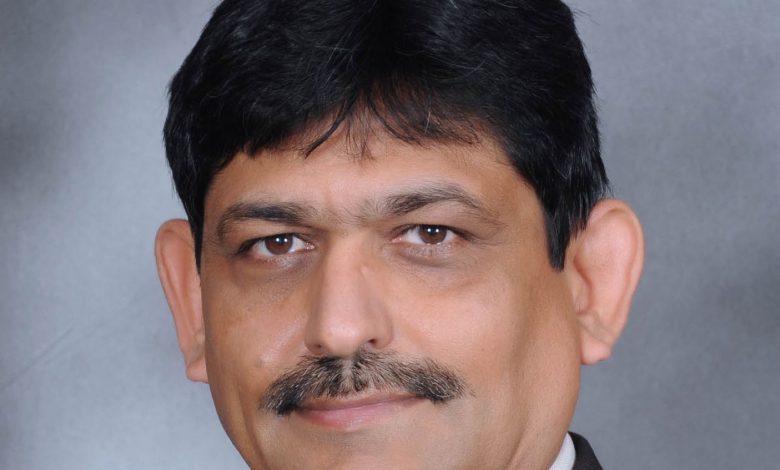Essar Shipping: Banking on a young fleet

Mumbai: For a little under seven years since August 2008, Captain Anoop Kumar Sharma has been functioning as CEO of India’s third largest private sector shipowner, Essar Shipping, whose fortunes he has been guiding through one of the most turbulent periods in the history of shipping.
On March 31 this year, the 55-year-old Sharma also took over the functions of managing director from the retiring A R Ramakrishna, with whom he had forged the perfect partnership designed to keep the company in good financial health. Ramki’s wizardry with numbers was well complemented by Sharma’s practical knowledge of shipping, garnered over three decades in the industry before he joined Essar.
A native of Jhansi, Uttar Pradesh, the 1960-born Sharma came to Mumbai as a teenager and started at Training Ship T.S. Rajendra. It was inevitable that, upon completion of his training in 1978, he would join the fount of Indian shipping talent, Shipping Corporation of India (SCI).
For the next three decades, he remained an SCI man, sailing on the state-owned company’s vessels until late-1992, and then coming ashore on December 14 1992, the day after the demolition of the Babri Masjid, that resulted in enormous political commotion and violence in India. Over the subsequent 15 years, Sharma gained rich and varied shore experience at SCI, moving from one department to another.
“When I joined Essar Shipping as CEO in August 2008, the company had just seven vessels,” he reminisces. “Today, we have 15 ocean-going ships – apart from numerous tugs and barges – with an average age of 11.5 years, that is almost half the average age of the Indian merchant fleet.”
The company today owns and operates two VLCCs, three capesize vessels, six mini-cape bulk carriers (all newbuilds from STX Dalian), two supramaxes and two handysize vessels; and has four supramax vessels on order at ABG Shipyard’s facility in Dahej, Gujarat.
One of these ships, which are to be acquired on a bareboat charter basis, will join the fleet in the ongoing financial year, while the others will be delivered within six months of one another. Once all of them have been added to the fleet, the company’s total tonnage will touch 2.2m dwt.
“Our vision for Essar Shipping is to have a young, balanced fleet,” says Sharma. “With so much oversupply of vessels the world over, everyone is looking to charter younger vessels. So, in recent times, we have replaced our entire older tonnage with reasonably young vessels.”
The company has generally adopted a policy of entering into a mix of long-term, medium-term and spot market contracts with reputed global oil and industrial majors, allowing it to have a hedge against spot market volatility and industrial cyclicality.
“But a policy correction has been forced on us due to the state of the bulk freight market,” says Sharma. “Our chartering policy used to be 60% employment on long-term basis, and 40% on short-term.
“However, in the current bad market, all long-term contracts for our bulk carriers have been long completed, and predictably not renewed. Bunker prices are so low at the moment that there is no advantage to slow steaming.
“The BDI is at its lowest point in its history. Rates are now so poor that I advise my chartering wing to avoid locking in our vessels for long periods, because we are bound to get better rates in a few months’ time.”
Starting from October 2015, over the following 15-18 months, Sharma sees the bulk sector improving – even if not drastically, to at least allow the company to recover interest costs. It has therefore become a matter of riding out this prolonged difficult period until shipping sails into a new dawn.

Dear Capt Sharma,
How certain are you about improvement in dry bulk sector from october 2015 in view of many researchers (including Mr. Peter Malepas of Braemar & Drewy consulting etc predicting a market recovery from 2017 onwards.
http://www.drewry.co.uk/news.php?id=360
Plsd also to hear about the factors leading to recovery from October 2015 onwards.
Best Regards
Anil Singh | Performance Counts
Harey Krishna Harey Krishna Krishna Krishna Harey Harey